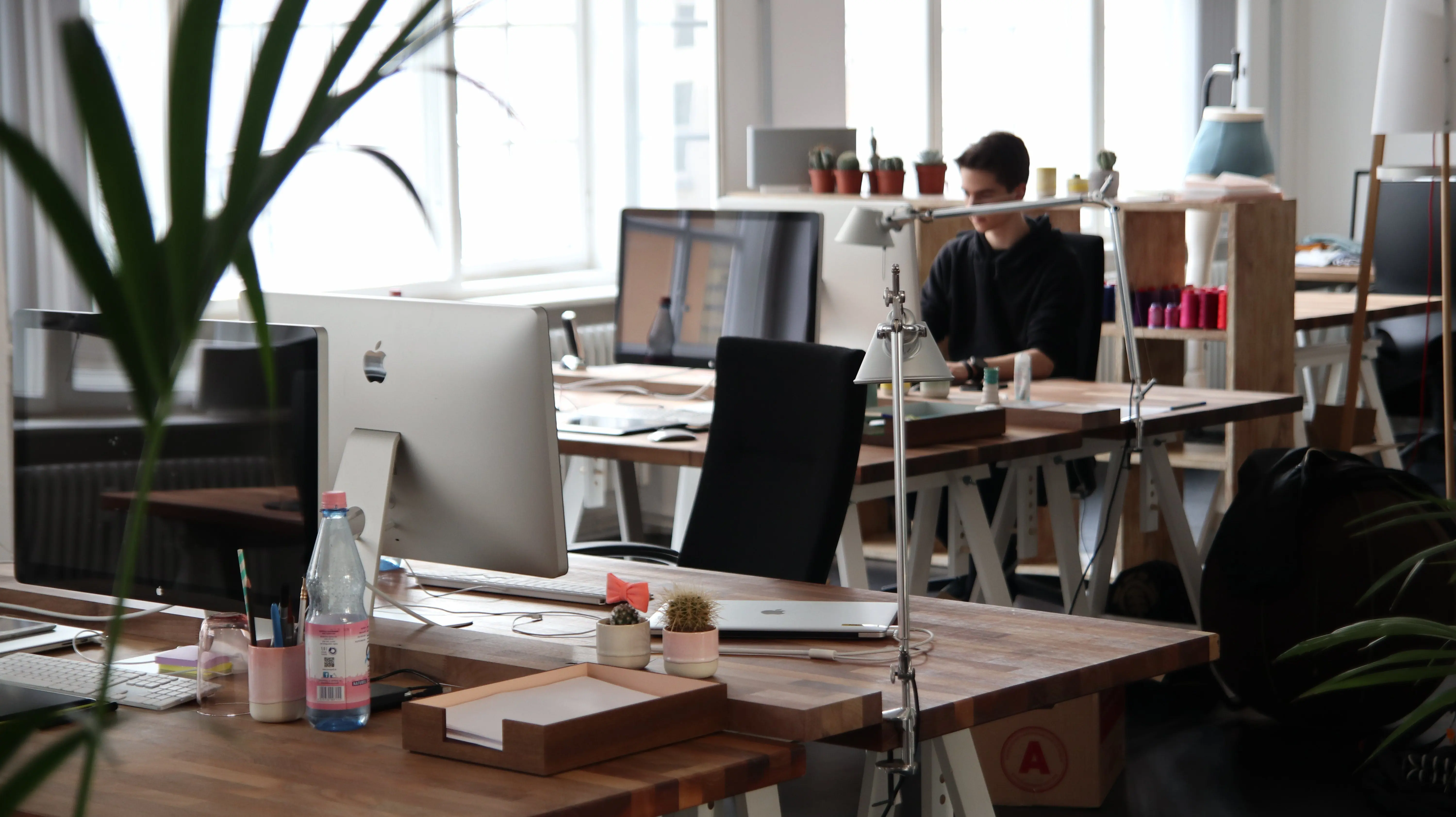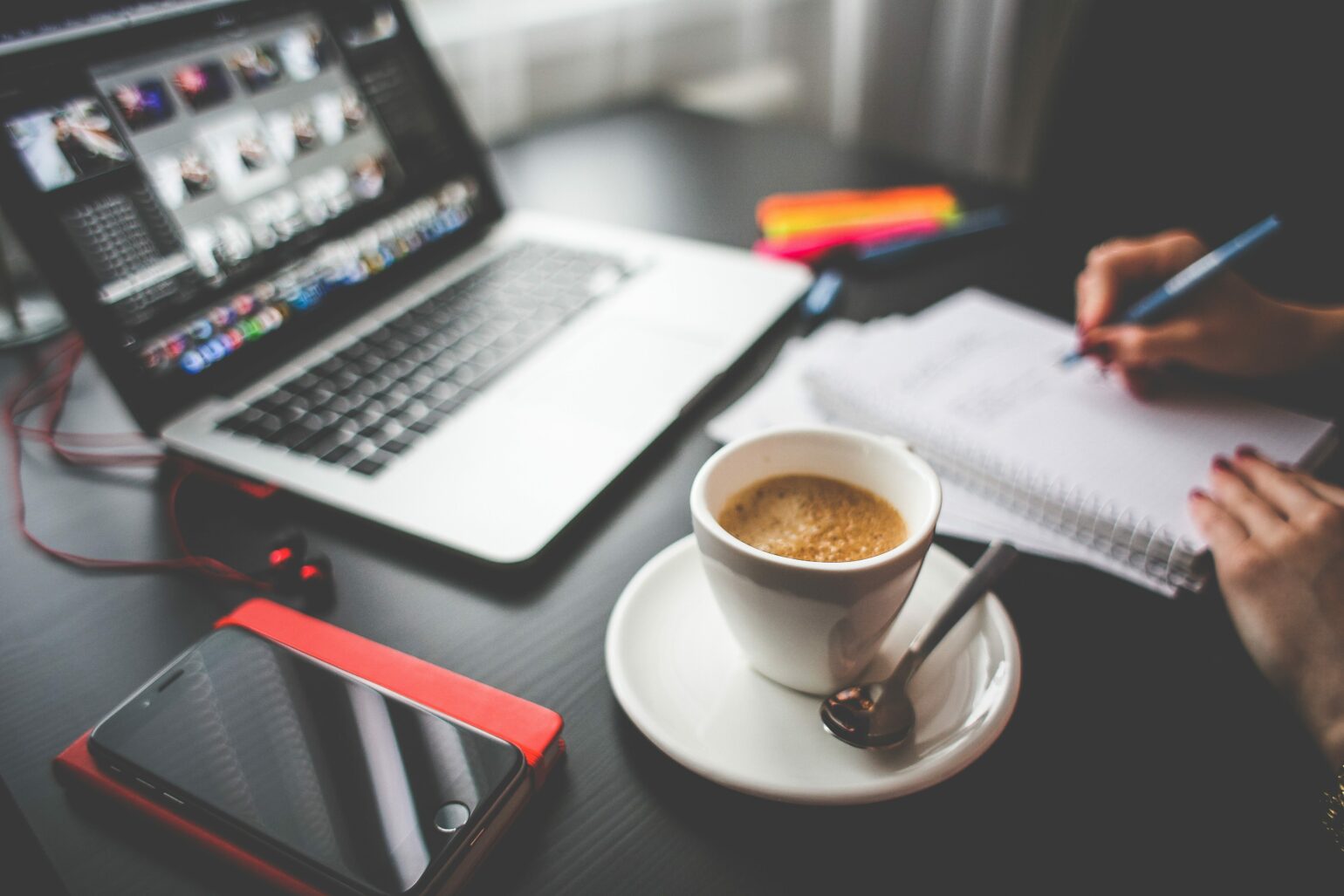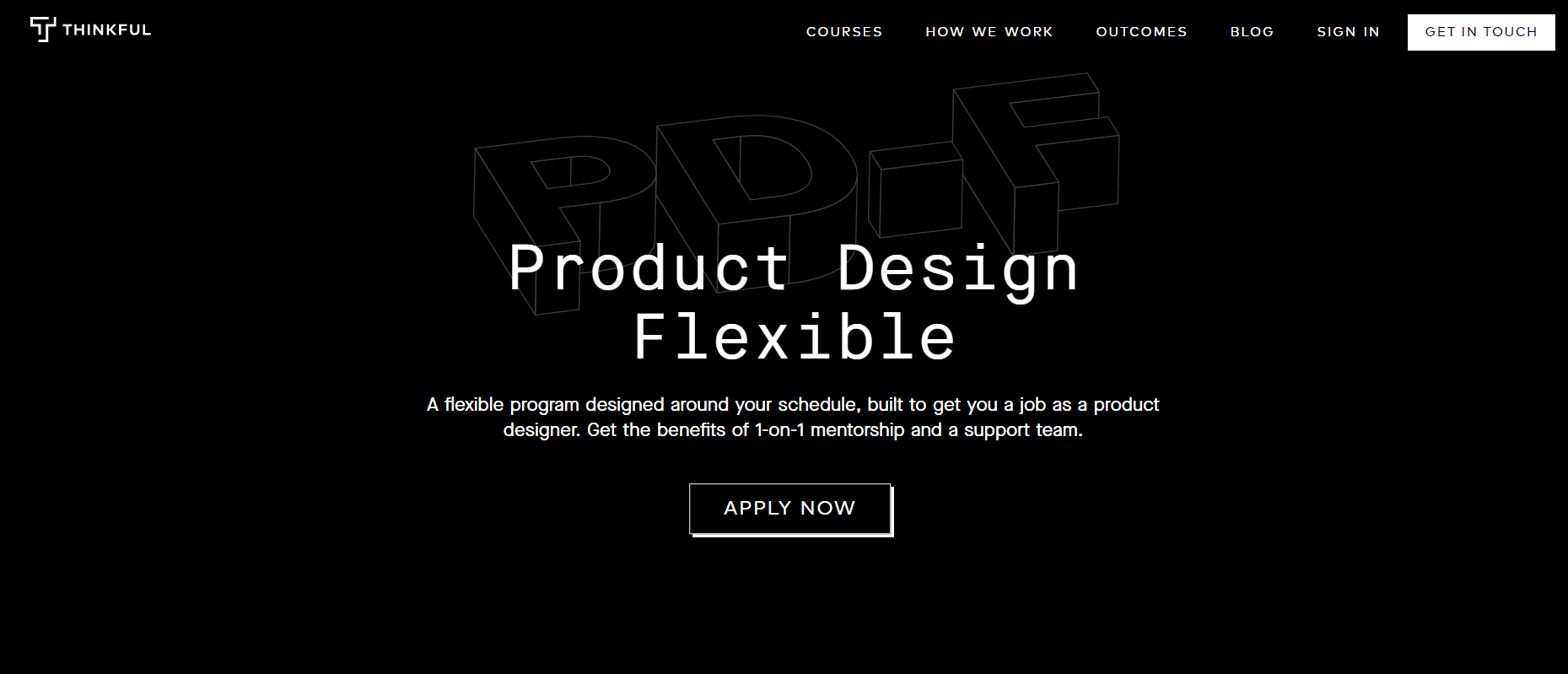Think about how many products you use on a daily basis. Whether it’s physical products like computers and phones, or digital ones like apps and software, the number could be anywhere from dozens to hundreds. And in the majority of cases, these represent the work of a product designer.
Of course, from a consumer standpoint, we only see the end result and have no idea about the work that went into it behind the scenes!
Today I want to help change that by explaining what product design is, what related jobs are available, what skills you need, etc. I worked as a product educator and later a product manager myself for a while, so it’s a field I can recommend from a personal standpoint as well.
This post is sponsored by Thinkful. They offer a Product Design Flexible course that is built to land you a job as a product designer within six months. If you’re interested in the product design field, see the end of the post to learn about a special offer.
Table of Contents
- What Is Product Design?
- What the Product Design Process Involves
- Why Product Design is a Good Area to Get Into
- Product Design Jobs & What They Entail
- Which Skills You Need for a Job in Product Design
- Where to Learn Product Design
What Is Product Design?
In the very shortest definition, product design is the process of creating a product that solves a problem.
But when you break it down, it’s a big process with lots of components.

The three main components are user experience (UX), user interface (UI), and product design. I’ll borrow from podcast guest Lenora Porter for some quick definitions:
- UX “basically explains the how and the why. So how would this work? Why is it working that way? What is the psychology behind this particular design?”
- UI is “what does it look like? When I get to that screen, what visual design do I see? What colors do I see? What visual hierarchy do I see? What does it look like?”
- Product design is “more of the business aspect. What does the business need and what does the user need, and how do I mesh all those things together?”
These three components work together to create a full picture of a user’s experience with a product: how it looks, how it functions, what problem it solves, etc.
Head back to the table of contents »
What the Product Design Process Involves
So, when a product designer starts tackling a new project, what might it look like from start to finish? Let’s break the process into seven steps. Along the way, product designers might be creating resources like:
- Journey maps (to tell the user story as they progress through a task or process)
- Wireframes (to quickly draft solutions)
- Prototypes (mock-ups created with the purpose of testing)
- High-fidelity design (the final mock-up of your design)

1. Problem Definition
The very first step is understanding what your customer needs. What are their goals, their problems, their worries and motivations? How will the product help them—and help the business?
2. Discovery
Next, you want to dig into the research and conduct your own to flesh out your understanding of what users want and need. Conduct surveys, analyze data, look at the competition, set up user interviews, etc.
3. Ideation
Once you have a thorough understanding of the problem you’re trying to solve (and the audience you’re solving it for), it’s brainstorming time. Generate ideas for the product.
4. Information Architecture
What flow do you need to take the user to their desired outcome? At this stage, you might build a flow diagram, site map, write outlines of the copy, etc. You’re starting with high-level organization before digging deeper.
5. Interaction Design
Now, you’re getting more nitty-gritty and creating a wireframe, mockup, or prototype of the product. At this point you’re considering the individual screens a user will see, the elements they’ll use on each screen, and so forth.
6. Visual Design
In the design phase, it’s time to bring the wireframe to life. What kind of visuals fit the brand? What tone do you want the colors and copy to convey? What about fonts, spacing, illustrations, etc? Now is the time to hash that out.
7. Quality Assurance (QA)
The first few iterations of a mockup might not look anything like the final product. Quality assurance helps refine a product and work out the kinks before products are actually released to users.
Head back to the table of contents »
Why Product Design is a Good Area to Get Into
Let’s look at a few reasons why you might want to consider product design as a career.
Use both creative and analytical skills
Design roles within the tech industry are an excellent option for people seeking a mix of art and science in their job. It brings together fields like design, business, engineering, and research, so you get a lot of variety in your day-to-day and won’t be bored!

Room to grow
Since product design is such a multidimensional role, it also allows for growth in many different directions. You’re building experience with a variety of skills and tools that can be useful for other career opportunities beyond product design.
For instance, you could decide you love the art and design element and take your career further in graphic design. Or, you could specialize in the business end of things and become a strategist. Or, of course, climb the product design ladder as far as it will go! There’s always something new to learn—this isn’t a career you have to worry about growing stagnant in.
Competitive product design salary
The “room to grow” point extends to salary, too, which is why you’ll find a wide range of product design salaries. While entry-level positions start at around $30,000 per year, the most experienced designers can pull in up to $150,000. LinkedIn reports a median base salary of $121,500.
Start coding now
Stop waiting and start learning! Get my 10 tips on teaching yourself how to code.
Growing demand
In 2019, LinkedIn named product design one of the most promising jobs in the US. Their report shows 86% year-over-year growth in job openings, so it’s a good time to get in on the action!
Head back to the table of contents »
Product Design Jobs and What They Entail
Every company assigns its design and development roles in their own way, so all roles are going to have different nuances and require different tasks.

Your title might be a straight-up product designer, or you could have a role that has overlapping duties and skills. Maybe you’ll start in one of the roles below and transition to another as you learn your strengths and weaknesses. Whatever the case, let’s learn about some roles involving product design.
Product designer
As described above, work to research and create product solutions for users, often in partnership with a company’s design and engineering teams.
UX designer
UX (User Experience) specialists focus on usability and how the product functions for the user. As noted above, both this and UI design below are part of product design—but whereas product designers have a myriad of tasks, UX and UI specialists have a much narrower focus.
UX is better for those who want to use analysis and testing to help a business seamlessly meet their users’ needs. Expect to do a lot of research and testing to consider every element of how the user will interact with the company and website, coordinating with developers and UI designers.
Learn more about UX design here and here.
UI designer
A UI (User Interface) designer works on how a product looks and feels to the user. They design interfaces for websites and apps to be visually appealing, flow well, and be easy for users to navigate. In contrast with UX, UI is better for those who want to focus on the visuals, layout, and general look and feel of a page or product.
UX researcher
This role is ideal for those who enjoy research and working with people. Their goal is to understand what the user really wants and needs by conducting extensive research through surveys, focus groups, interviews, A/B tests, and more.
UX strategist
Are you more of a big-picture person? Strategists lead the UX/UI design process by setting the guidelines and vision for product researchers and designers. Ultimately, strategists help teams stay user-focused and create the best product market fit.
Interaction designer
This is a fairly niche role. Interaction designers focus on creating the experience users have when they interact with digital products. They ensure that every interaction with the product helps users reach their intended goal.
Information architect
Decide what digital information should be displayed for knowledge retention and understanding, and the best way possible to display it. These professionals are all about helping users find the best answers and information.
Front-end designer
Use languages like HTML, CSS, and JavaScript to code user interfaces and web pages. They take all the knowledge gleaned by researchers, strategists, and other designers to make beautiful products.
And more
There are even more roles that can overlap with product design. For example:
- Experience designer (XD)
- Experience architect (XA)
- Motion or animation designers
- Data analysts
- Prototypers
- Business strategists
- Product managers
- Etc.
Like I said—there’s a lot of variety!
Head back to the table of contents »
Which Skills You Need for a Job in Product Design
Design skills
You can’t have product design without “design”!
- Creativity—to make a product stand out, it’s important for designers to think outside the box
- Attention to detail—good design means precision and no elements out of place
- Good grasp of design principles like these seven
- Interaction & UI design
- Visual design
- UX design
- Prototyping

You should also be familiar with specific design tools like Sketch, InVision, and Photoshop. Here are some tips for using Sketch.
Other skills
Since product designers are usually working with digital products and network with the engineer team, basic tech skills and literacy is helpful. So are some psychology-related skills, since the job is all about helping the user.
Useful skills include:
- Basic web development—HTML, CSS, JavaScript. As Lenora Porter says, “I think it’s really beneficial for all designers to learn how to think about design from a development standpoint.”
- User research and testing
- Conceptual thinking
- Psychology/human behavior

You might come across product design job listings that ask for other skills too. I always suggest looking for “dream job” listings and reverse-engineering your skills to fit!
Start coding now
Stop waiting and start learning! Get my 10 tips on teaching yourself how to code.
Soft skills/traits
Succeeding in many jobs is as much about your personality and “soft skills” as it is about your professional specialties. All of these soft skills will benefit you as a product designer.
- Problem-solver—Product design is basically solving problems for users
- Decisive—Lots of decisions to be made
- Organized—Need to coordinate with different people and teams
- Efficient—You’re juggling a lot of tasks
- Empathetic—Be able to put yourself in the shoes of the user
- Analytical—Sort through information to delve into how humans think, behave and interact with technology
- Good at teamwork—Have to work with different people to produce something together
- Skilled communicator—You’re In constant communication with your team, working to understand the problem, brainstorm ideas, etc.
- Thick skin/comfortable making mistakes—Being comfortable getting things wrong allows you to be more innovative and learn quickly from mistakes

To learn more about the skills you need to land a job as a product designer, see this article
Head back to the table of contents »
Where to Learn Product Design
Since we’ve already established that product design encompasses so many different skills, it’s actually a great choice for career-changers. Chances are you’ll already have something to bring to the table! I mentioned Lenora Porter before—you can hear about her journey as a former math teacher pivoting to product design in this episode of the podcast.
That said, until recently you often needed a bachelor’s degree (product design, industrial design, engineering and architecture) for even entry-level product design jobs.
But now, thanks to Thinkful, you could become a product designer in as little as 6 months.
Please note that the information below may change in the future!
Thinkful’s program is called Product Design Flexible. True to its name, the course works around your schedule, so you don’t have to quit your current job as you study for your future one. That doesn’t mean it’s slow-paced or easy, though: while you can set your own schedule, you should dedicate 20-30 hours a week to the program.

The course curriculum is specifically designed to get you job-ready and keep pace with state-of-the-art technology. During the course, students will learn how to identify user problems and create solutions, gather and analyze high-quality data, work with visual design principles, use code to mock up prototypes, test their projects with real users, and more.
And you won’t be learning alone. In addition to 40+ hours of instructor office hours and QA sessions, you’ll be paired with a program manager and mentor to keep you on track.
The course benefits don’t end after graduation, because you’ll have a dedicated career coach helping you apply to jobs and succeed at interviews. It’s why 90% of grads ended up being hired as full-time designers. Compared to their previous roles, students reported a $26,952 average yearly salary increase.
Does product design sound like a possible career for you? Use this special LTCWM link to get $500 off a Thinkful course! You don’t have to enroll right away; just enter your email now and the discount will be automatically applied when you enroll later.
I hope this helped illuminate the world of product design a little better! As I briefly mentioned in the intro, I spent two years working on a product team myself, and I can definitely say it’s fulfilling to be part of creating something that tangibly helps users.
Check out Thinkful to fast-track your own product design career. I’d love to hear about it if you do!
Note: there are affiliate links in this post.

